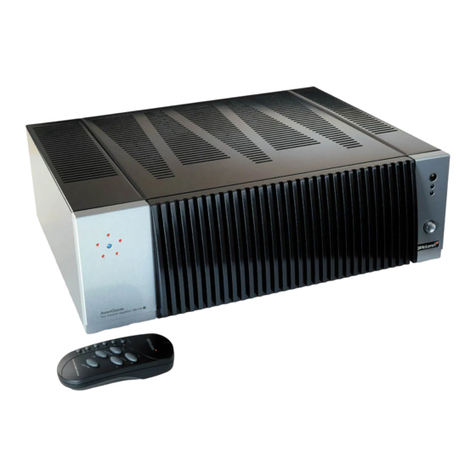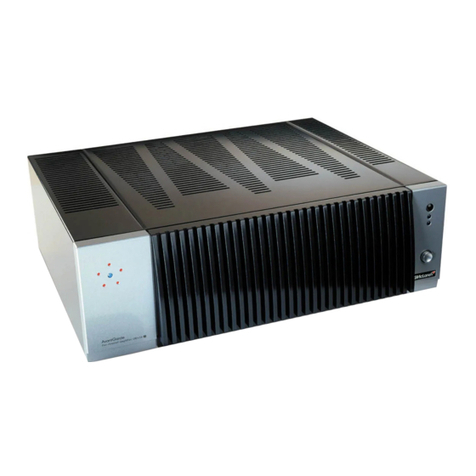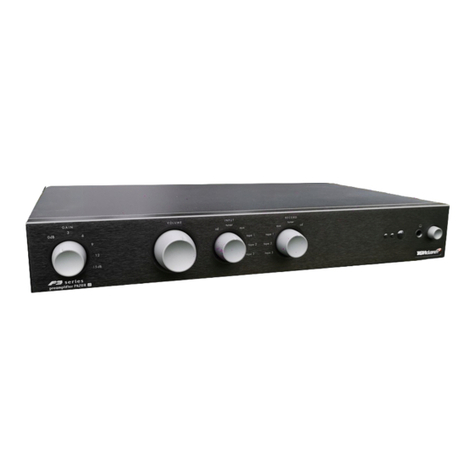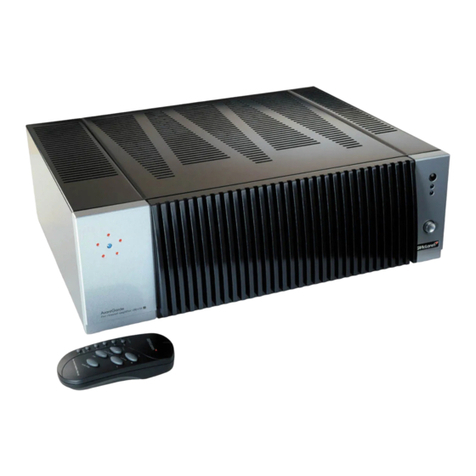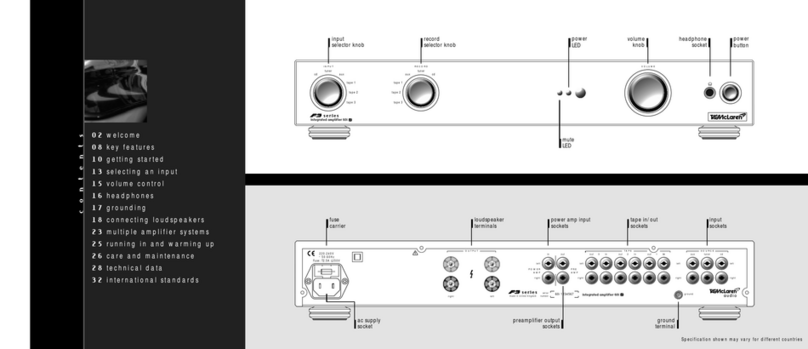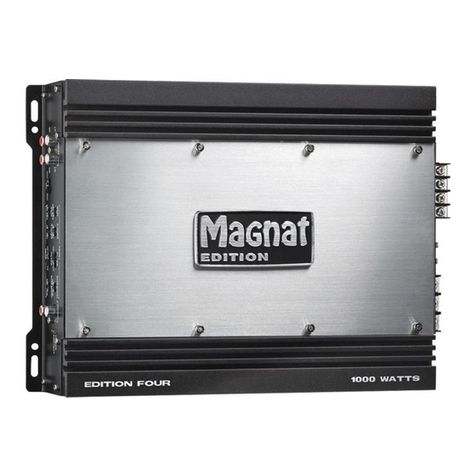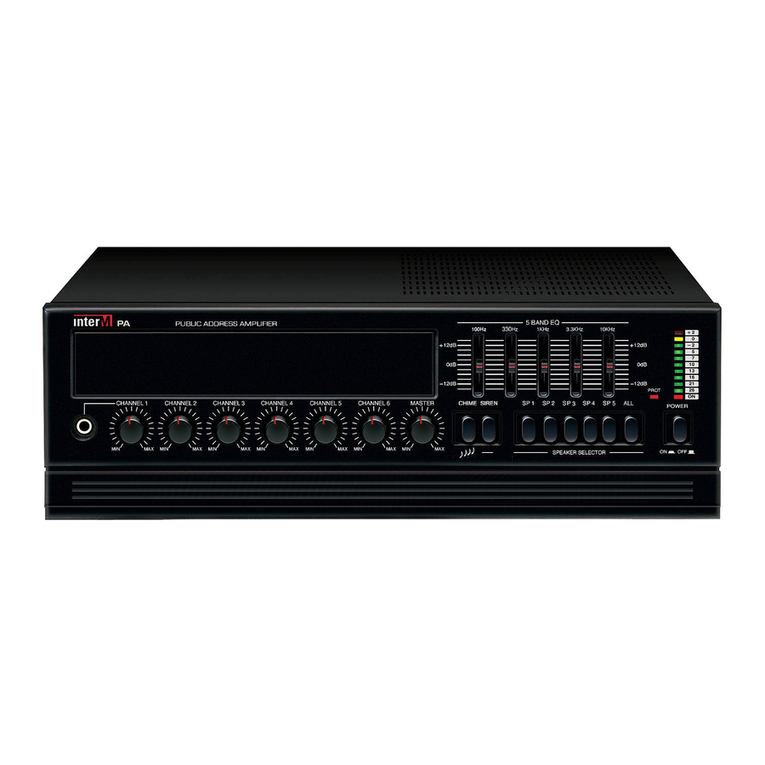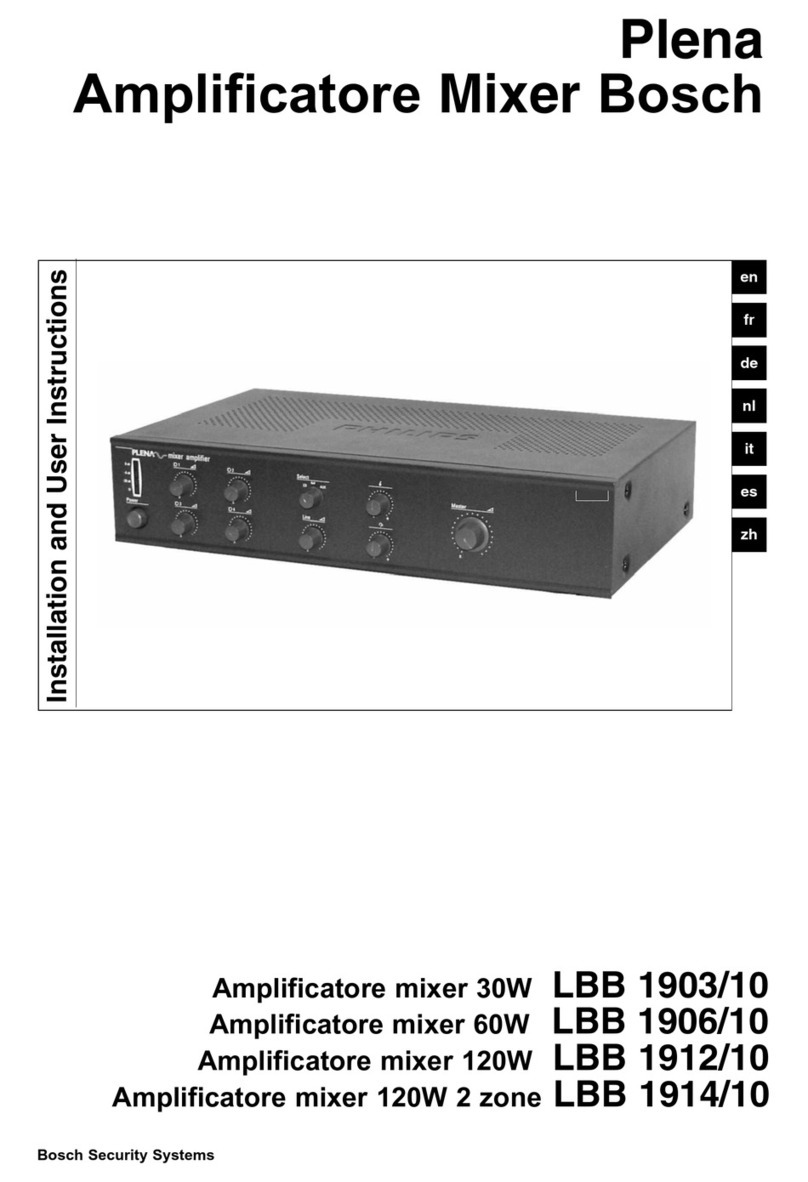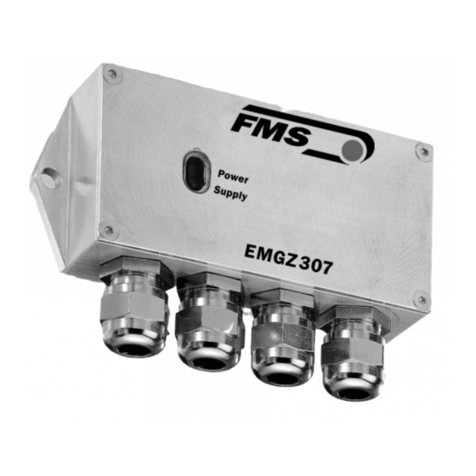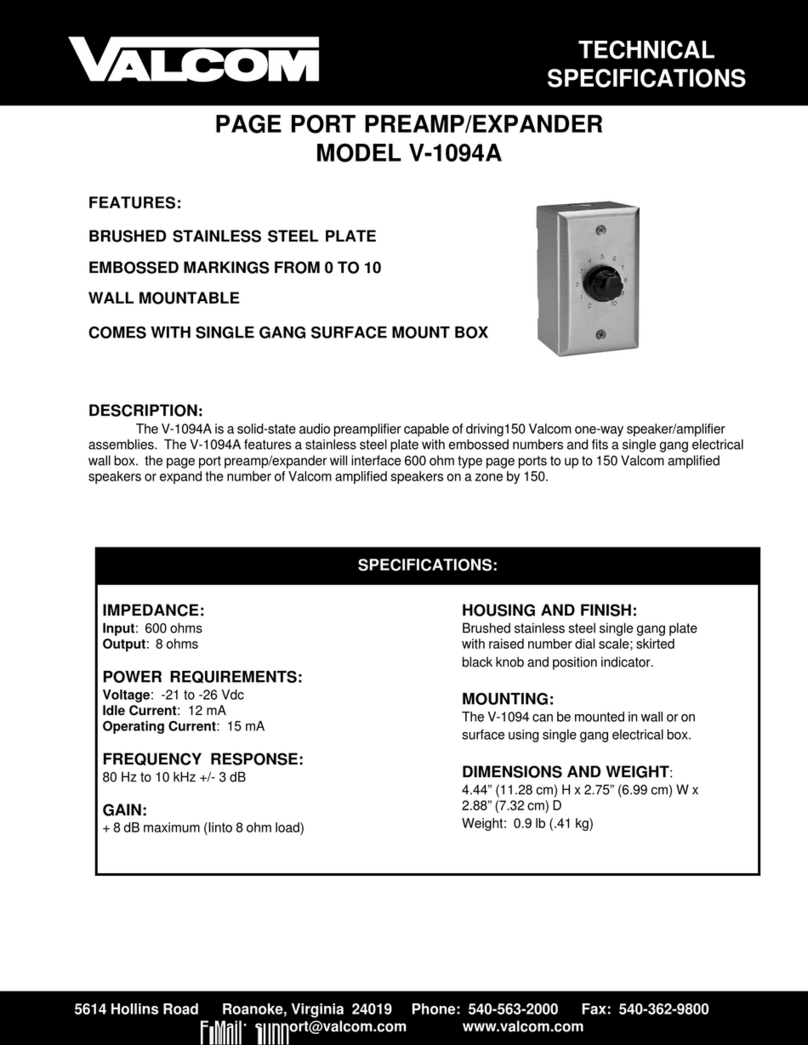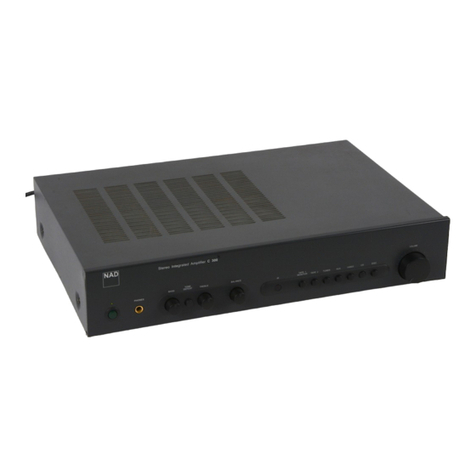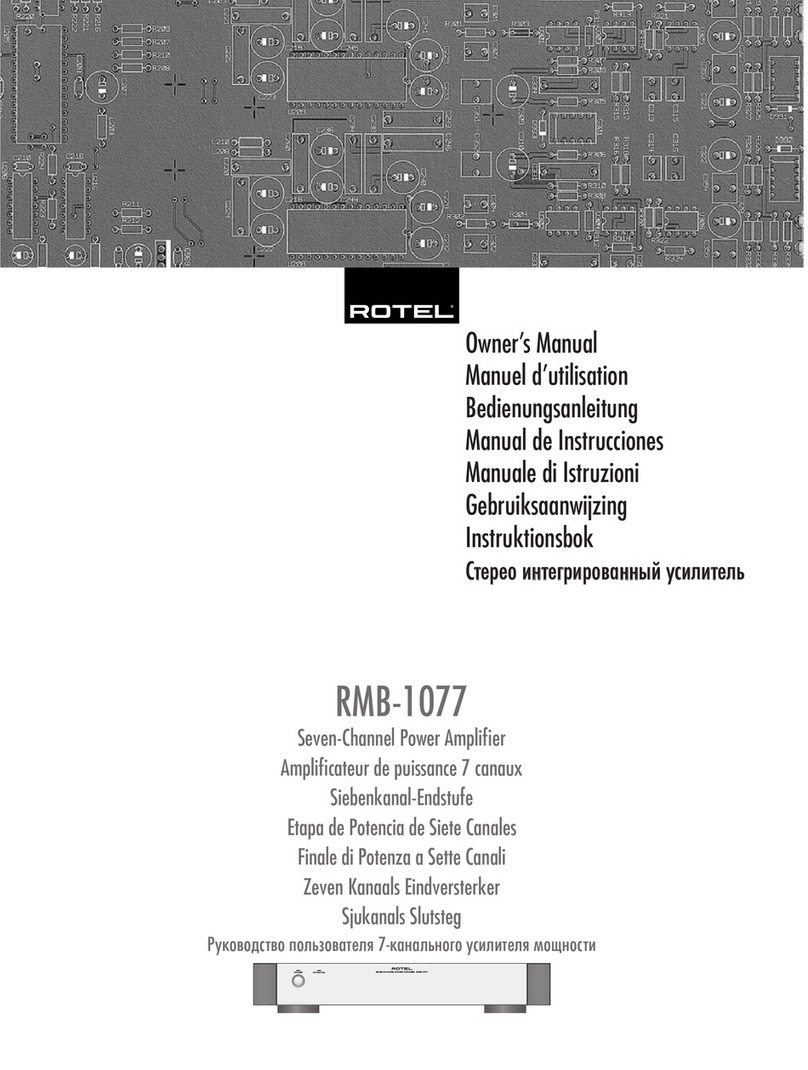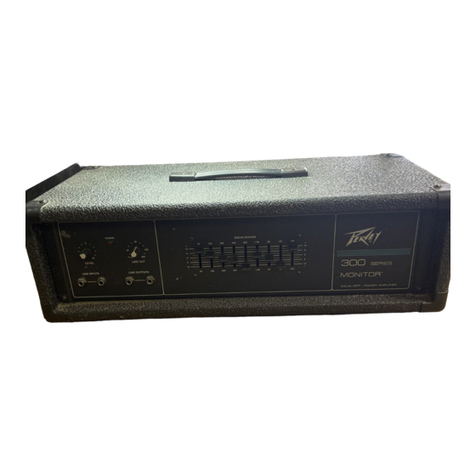amplifier module |1110 |amplifier module
low distortion
A theoretically ideal amplifier reproduces
sound perfectly over an infinite range of
frequencies - starting from well below the
audible range and extending far above the
capabilities of human hearing. Although
sound outside the human hearing range of
approximately 20 Hz to 20 kHz cannot be
heard, it can significantly distort the quality
of music reproduction through an effect
which audio engineers call ‘intermodulation
distortion’. This type of distortion moves
imperfections that originate outside the
hearing range back into the audible
frequencies. To minimise this effect, TAG
McLaren amplifiers have a frequency
response which extends both above and
below the range of normal human hearing.
straight line technology
An amplifier must respond to very low
frequencies but block any Direct Current
(DC) to prevent intermodulation distortion.
This is traditionally achieved using
capacitors, which also block some of the
low-frequency signals. In the 250MR, a
feedback circuit eliminates DC offset voltage
and allows the signal path to be direct
balanced XLR and standard RCA input
The 250MR provides both a balanced XLR
input and a standard RCA input. There is no
need to switch between the two inputs, the
250MR will automatically sense the input
used.
single ended RCA input
A single ended connection sends, as the
name implies, the signal via a two conductor
cable, one for the signal and one for the
ground (which is usually connected to the
screen on one or both ends).
The single ended connection is the most
commonly used connection type between
preamplifiers/av processors and their power
amplifiers. It works extremely well, even over
long distances, if the output stages of the av
processor/preamplifier are of a ‘low
impedance’ configuration, such as those in
the TAG McLaren AV32R or DPA32R.
However, if several products are connected
together it is possible for a current to flow
between the ground connections of those
units, caused by electro-magnetic
input interference or ground potential
differences. This current is indistinguishable
from the signal and hence can become, if
severe enough, audible as a hum or buzz.
The problem is usually referred to as
ground loops.
balanced line technology XLR input
A major advantage of balanced inter-
connects is the complete suppression of
ground-loop problems.
Balanced line inputs use 3 conductors, one
for the ground and two for the voltage
difference between the signal and the
ground at the preamplifier/av processor.
As a result the balanced input at the
amplifier does not respond to the voltage
between input and ground, which could be
altered by a ground loop, but to the
difference between the two conductors
carrying the signal.
For this system to work well, it is important
that the balanced input performs an
accurate subtraction of the signals at its
input terminals. The measure of how well it
does this is called the ‘common-mode
coupled without any capacitors, an
arrangement called ‘straight line’ technology.
The result is a very precise reproduction of
the lowest bass.
supersonic high frequency response
In order to reproduce high frequencies, the
250MR is constructed using highly rated,
high-precision components. The circuit has
been painstakingly designed to minimise
audio signals picking up interference and
intermodulating. Exceptional transparency
and purity of sound are the result.

